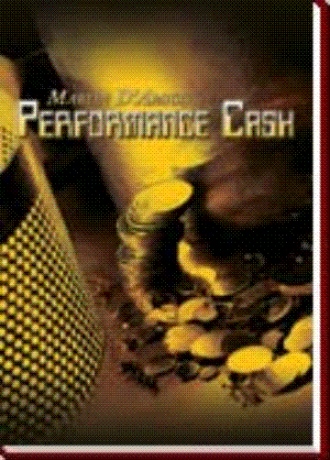Performance Cash
by
Book Details
About the Book
Who said that a major house must publish a book
& be 200 pages to Introduce Performance Cash?
If Martin D'Amico,
the author of How to Predict Year-End Cash
Can Predict Performance Cash Weekly
Why Not Abandon Monthly Closings?
Especially when he can rescue the accounting profession from
the derogatory remarks made by Fortune Magazine April 16, 2001.
"--accounting gives rotten information about the value &
performance of modern, knowledge-intensive companies."
Wanted: Accounting model fit for the "new economy"
Accounting Today August 21, 2000.
The Profession's ties to tradition with provincial reporting concepts and mechanics have caused Financial Analysts and Software Houses to usurp the Power of Business Numbers from Accountants.
First, what is so magical about a month? Each month has a different number of active days because of weekends, holidays and seasons. A week of cash flow data is much more consistent in every respect and a lot more current.
Second, there need not be any SEC, IRS or FASB rules how any Corporation reports its weekly cash flow from operations. If done in the interest of Management and Shareholders it can be as objective and as clear as four benchmarks. All concerned would understand a weekly plus or minus and the year to date implications to Performance Cash. Management can spend Performance Cash and a Shareholder knows there is little that can be wrong when better than anticipated.
All the monthly time, energy, and effort that Accountants now spend preparing and analyzing, lengthy financial statements could best use four benchmarks to isolate the Performance Cash of customer demand—the third step for Accountants to firm their grip on the numbers of a business.
About the Author
As Corporate Controller, he vividly remembers Amerace Corporation and its 13% interest costs that had to be satisfied by a steady stream of cash flow. Avoiding weekly customer demand as reflected by each week's cash flow in favor of reporting monthly Operating Earnings with all its accounting adjustments is depriving a business man of the most consistent and unmitigated truth of a business.
It is a rare General Manager or CEOs that understands the relationship of cash flow to operating earnings; it is not easy, nor necessary. Concentrate on cash as reflected by sales and a check book, when flow remains positive and a Manager knows the ultimate sources; Operating Earnings will fall into place.
As a Manager you are well aware of what depletes cash, it is time to learn more about its most significant and volatile sources 1) how many units a business sells 2) the price of each different major product. D'Amico first brought unit knowledge to the business world as a Manufacturing Controller back in the 80's when he converted unit production reporting for a multi product plant to hours. How many different units were produced or sold was never an Amerace problem again.
In January 1999 Management Accounting Magazine published and validated D'Amico's unit selling price relationship to "hours paid" for its entire Accounting Membership. In November of the same year Public Accounting Magazine addressed their Professional readers with similar legitimization. In both articles selling prices were linked to hours and cash flow for the benefit of the Entrepreneur. Although cash flow verse earnings remained reconcilable, Accountants as a group of financial advisors, felt no need to pass hour "know how" on to internal management or their clients.
The deliberation by Accounting Organizations over the hour/cash flow concept allowed him to perfect an idea instigated in the Public Accounting review of his first book —a series of different "hands–on and real–time" excel sheets itemized in the Table of Contents. An accountant's endorsement as to how it is done is no longer necessary, only a General Manager's desire to have it done. There is an Excel Worksheet in the Appendix that includes cash flow in the traditional sense. All Excel Sheets are applicable to Opearting Earnings as well.
Even when sales dollars are equal to or surpass those planned, variations to earnings are burdensome to account for, not timely, and in a great many cases related to Accounting journal entries. "Weekly Performance Cash cuts out the journal entries so that Management can influence the future with simple reasoning." If the principal product, a hamburger or a widget has been selling for $4.00 over a 7 month period it is not difficult to predict cash flow based on that assumption for the remainder of the year.
Dedication
I always considered Accounting as numbers speaking out about Performance with no one significant amount standing alone, but each in relation to another number. I am horrified by the present day deception in Financial Reporting; with greed taking the place of creativity. I do thank all facets of the Accounting Profession for their lack of curiosity as exhibited by constant resistance to my creative change. The result was a more comprehensive expression of Performance Cash as a Product for all Businesses.
Preview
Accounting sees a Business in conformity to standards; Martin D'Amico sees the truth of a business as a reflection of: Product, People, & Performance Cash. The effectiveness of Financial Reporting is how Sales, Hours & Cash Flow are exposed from all transactions of Business.


